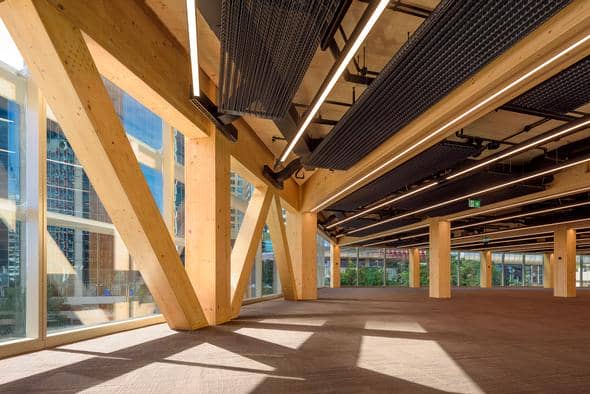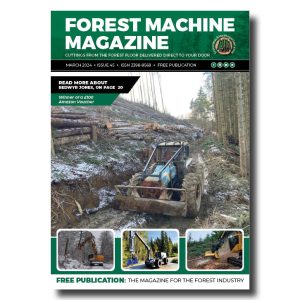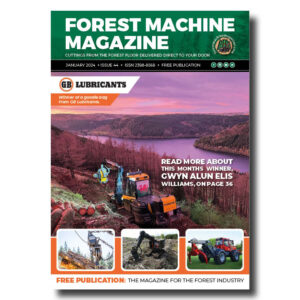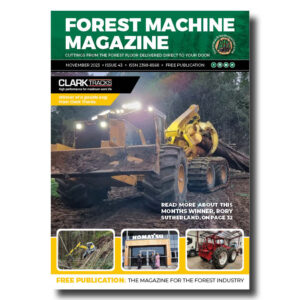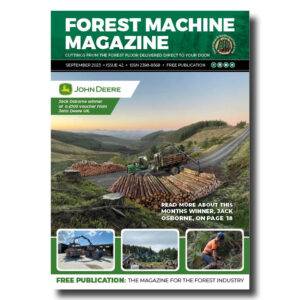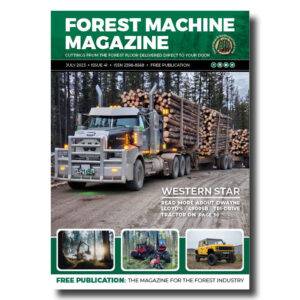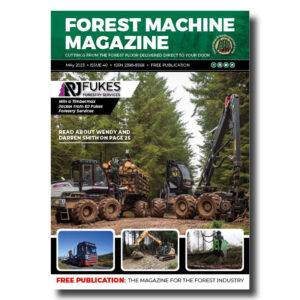BioStrong Wood: a revolutionary innovation that mirrors nature’s fossilisation process, bringing you high-performance timber that’s not only environmentally friendly with low carbon impact but also potentially more affordable.
BioStrong Wood; When trees become submerged in peat bogs or riverbeds, a gradual transformation occurs within nature. Deprived of oxygen and enveloped in sediment, the wood undergoes a process of darkening, densification, and mineralization over the course of centuries. Eventually, these trunks may resurface as highly valued “ancient buried wood,” distinguished by its resistance to decay and a marble-like luster. Recently, a team of international researchers has developed a method to replicate this natural enhancement more expeditiously, sustainably, and at an industrial scale.

-
That’s a remarkable amount of work hours for a single machine, the Norcar 600 owned by Erkki Rinne is taken well care of, it even has the original Diesel engine.
-
Kieran Anders is a forestry contractor working in the lake district. His work involves hand cutting and extracting timber using a skidder and tractor-trailer forwarder.
-
It is not possible to eliminate chain shot, but there are simple steps that can be taken to reduce the risk.
-
Arwel takes great pride in the fact that the mill has no waste whatsoever, “the peelings are used for children’s playgrounds, gardens and for farm animals in barns in the winter and the sawdust has multiple uses in gardens and farms as well.
-
Timber hauliers need to encourage young blood in, and also look after the hauliers we have, we need make the sector a safe and positive place to work.
FIND US ON
Related Posts
The outcome of this research is BioStrong Wood, a material that surpasses stainless steel in strength while being lighter, more sustainable, and significantly more cost-effective. Professor Erlantz Lizundia, a leading researcher from the University of the Basque Country who has published findings in *Science Advances*, stated, “Wood is one of the most accessible biological materials; however, outside of its traditional applications, it remains largely unexplored for high-performance uses. Our findings indicate that it is feasible to produce materials exhibiting very high mechanical performance that are also economically viable and possess carbon capture capabilities.”
BioStrong Wood is the result of a collaborative effort involving the University of the Basque Country in Spain, Wuhan University, and the Chinese Academy of Sciences. This innovative material is produced through a three-stage process that emulates the fossilization of ancient timber.
Initially, planks of fast-growing poplar and radiata pine are inoculated with white-rot fungi, which selectively break down lignin—the adhesive polymer that binds wood fibres—while preserving the robust cellulose structure. Following this, a mild alkaline wash is employed to cease fungal activity and remove low-molecular-weight residues. In the final stage, the boards undergo hot-pressing at temperatures exceeding 180°C, resulting in the collapse of cell walls and facilitating the fusion of fragmented lignin into new carbon–carbon bonds.
The culmination of this process is a dense, horn-like slab that retains up to 85% of its original mass, a significant improvement over acid-treated “super woods.”
Mechanical testing has demonstrated that BioStrong Wood can endure tensile stresses exceeding 530 MPa, surpassing the 520 MPa benchmark of SAE 304 stainless steel. Furthermore, it is capable of absorbing more than eleven times the energy before experiencing fracture when compared to untreated wood. The flexural strength of this material has tripled, and it maintains stability across extreme temperature fluctuations, ranging from –196°C to 120°C. A notable characteristic is its water resistance; with contact angles nearing 140°, BioStrong Wood effectively repels moisture, exhibiting minimal swelling or mildew even under accelerated weathering conditions.
The impressive performance metrics can be attributed to a reengineered microarchitecture. X-ray diffraction analyses indicate an increase in cellulose crystallinity, while scanning electron microscopy showcases a near-complete elimination of pores. Reformed lignin functions as a natural epoxy, binding cellulose sheets and sealing off pathways for water and oxygen. However, the strength of the material represents only one aspect of its value. BioStrong Wood excels in sustainability as well. A life-cycle analysis reveals that each kilogram of this material sequesters approximately 1.2 kilograms of CO₂, even after accounting for energy consumption and chemical inputs. This contrasts sharply with steel, which generates 1.9 kilograms of CO₂ per kilogram produced, and glass-fibre composites, which can reach emissions of up to 5 kilograms.
Production costs also appear promising, with estimates indicating that BioStrong Wood can be produced at approximately CNY 2 (US$0.30) per kilogram, positioning it competitively with plywood and significantly more economically viable than aerospace-grade polymers.
Early prototypes indicate a broad spectrum of applications, including vehicle panels, sports equipment, impact-resistant phone cases, and cryogenic insulation supports. Additionally, the material’s aesthetic similarity to fossilised wood enhances its suitability for use in exposed architectural beams.
Because the process works with multiple wood species, regional mills could use local forestry residues—reducing reliance on imported steel or petrochemical resins. Researchers are already experimenting with faster fungal strains and shorter incubation times to scale production from days to hours. Challenges remain, especially around fire certification and end-of-life recycling – with controlled pyrolysis to biochar one potential pathway. But the team is optimistic that BioStrong Wood could soon meet building codes and industrial standards. If trials succeed, the researchers said planks may top skyscrapers, line vehicles, or shield spacecraft: “Even in advanced engineering, timber has a place—and now, it might just outmuscle metal,” they said.

Sign up for our free monthly newsletter here
Contact forestmachinemagazine@mail.com to get your products and services seen on the world’s largest professional forestry online news network.
#homeoflogging #writtenbyloggersforloggers #loggingallovertheworld
Written by loggers for loggers and dedicated solely to the equipment used in forestry operations.

